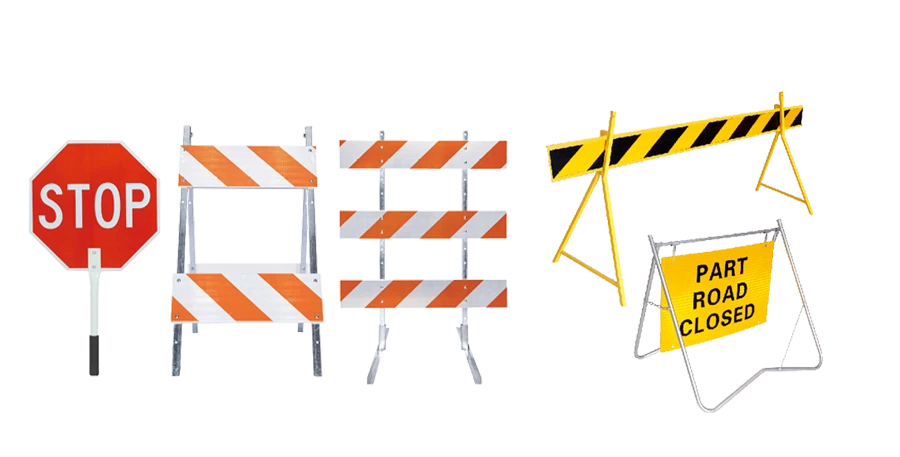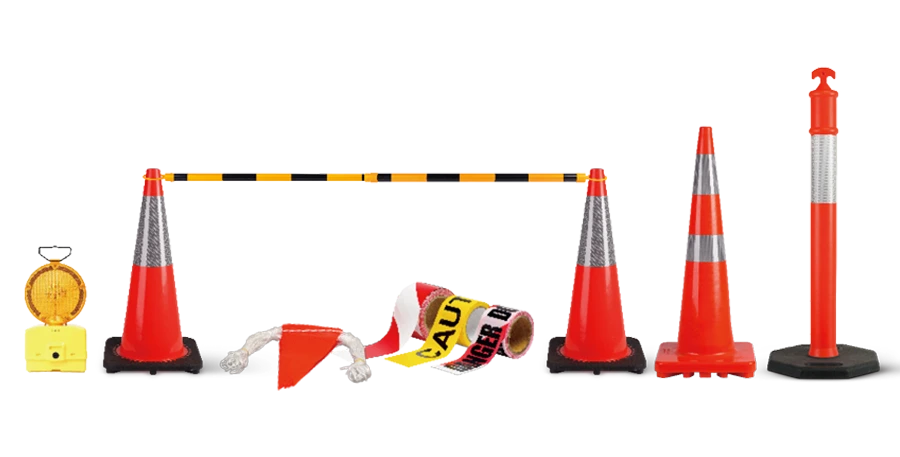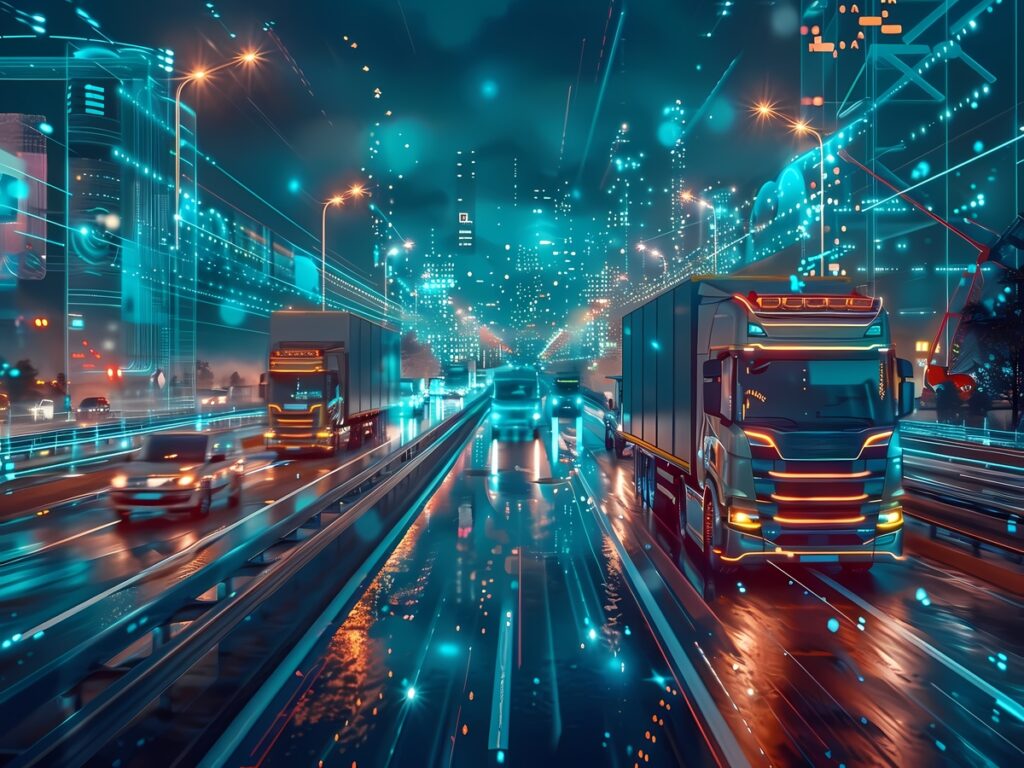
एआई हमारे परिवहन प्रबंधन के तरीके को बदल रहा है, सड़कों को सुरक्षित बनाना. स्मार्ट ट्रैफ़िक कोन ट्रैफ़िक में सहायता के लिए सेंसर और IoT का उपयोग करते हैं. ये कोन सड़क के खतरों का पता लगाते हैं और ड्राइवरों को त्वरित अपडेट देते हैं. इससे दुर्घटनाएं कम होती हैं और लोग सड़क पर सुरक्षित रहते हैं. एआई उपकरण गैस बचाने और प्रदूषण में कटौती के लिए बेहतर मार्गों की योजना भी बनाते हैं. स्मार्ट कोन में आसानी से देखने के लिए एलईडी लाइटें और चमकदार सामग्री होती है. वे अच्छा काम करते हैं, तब भी जब बाहर अंधेरा हो. स्मार्ट तकनीक और लचीलेपन का यह मिश्रण परिवहन के भविष्य को बेहतर बना रहा है.
चाबी छीनना
- एआई सेंसर और जीपीएस वाले स्मार्ट कोन के साथ सड़कों को सुरक्षित बनाता है. ये शंकु ड्राइवरों को खतरों के बारे में चेतावनी देते हैं, दुर्घटनाओं को रोकने में मदद करना.
- एआई सिस्टम शुरू होने से पहले ही ट्रैफिक जाम की भविष्यवाणी कर सकता है. इससे अधिकारियों को यातायात को बेहतर ढंग से चालू रखने के लिए शीघ्र कार्रवाई करने में मदद मिलती है.
- ट्रैफ़िक को अच्छी तरह से प्रबंधित करने के लिए AI वास्तविक समय डेटा का उपयोग करता है. यह परिवर्तनों पर त्वरित प्रतिक्रिया देने में मदद करता है, यात्राएँ आसान और तेज़ बनाना.
- स्मार्ट कोन अलग दिखने के लिए एलईडी लाइट और चमकदार सामग्री का उपयोग करते हैं. इससे ड्राइवरों को खराब मौसम में उन्हें देखने में मदद मिलती है, सड़कों को सुरक्षित रखना.
- एआई-संचालित सिस्टम नियम तोड़ने वालों को जल्दी और निष्पक्ष रूप से पकड़ लेते हैं. इससे सड़कें सुरक्षित बनती हैं और दुर्घटनाएं कम होती हैं, विशेष रूप से जोखिम भरे क्षेत्रों में.
परिवहन में ए.आई: हम ट्रैफ़िक कैसे प्रबंधित करते हैं, इसे बदल रहे हैं
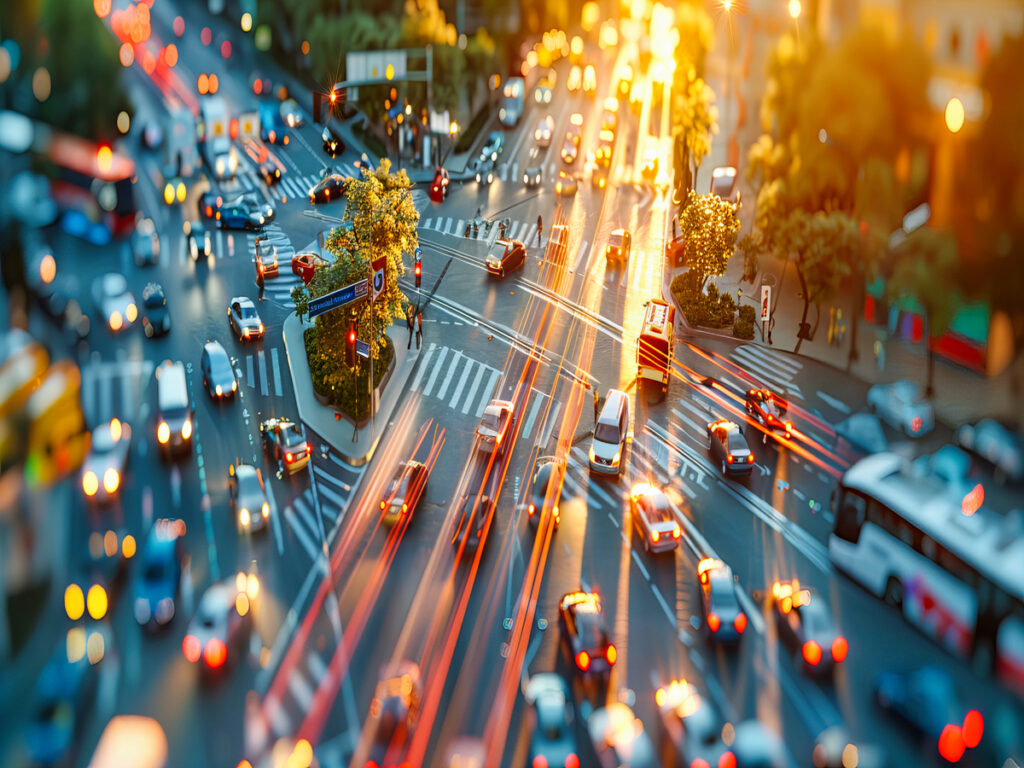
यातायात सुरक्षा और प्रबंधन में उपयोग
एआई हमारे ट्रैफिक सिस्टम को संभालने के तरीके को बदल रहा है. यह ढेर सारे डेटा का अध्ययन करके आवागमन को आसान और सड़कों को सुरक्षित बनाने में मदद करता है. लंदन और सिंगापुर जैसे शहर जाम को कम करने और पैदल चलने वालों की सुरक्षा के लिए स्मार्ट ट्रैफिक लाइट का उपयोग करते हैं. व्यस्त समय के दौरान कारों को चालू रखने के लिए ये लाइटें जल्दी से समायोजित हो जाती हैं.
एआई जोखिम भरे क्षेत्रों का पता लगाकर सड़कों को सुरक्षित भी बनाता है 85% शुद्धता. आपातकालीन वाहन पूर्व -पूर्व (ईवीपी) प्रणाली आपातकालीन वाहनों को तेजी से गुजरने देने के लिए AI का उपयोग करें. इससे समय की बचत होती है और जान बचाई जा सकती है. जापान में, दुर्घटनाओं की भविष्यवाणी करने के लिए एआई मौसम और दुर्घटना इतिहास को देखता है. इससे अधिकारियों को शीघ्र कार्रवाई करने में मदद मिलती है, जैसे गश्त भेजना या गति सीमा बदलना.
ट्रैफ़िक पर AI का प्रभाव बहुत बड़ा है. अध्ययनों से पता चलता है कि यह जाम को कम करता है 30% और यात्रा का समय 25%. बसें और ट्रेनें चलती हैं 15% और तेज, और ईंधन का उपयोग कम हो जाता है 15%, CO₂ प्रदूषण कम करना. ये बदलाव दिखाते हैं कि एआई कैसे परिवहन को सुरक्षित और बेहतर बना रहा है.
समस्याओं के घटित होने से पहले ही उनकी भविष्यवाणी करना
पूर्वानुमानित प्रणालियाँ यातायात प्रबंधन को बदल रही हैं. समस्याओं को बाद में ठीक करने के बजाय, वे उन्हें पहले ही रोक देते हैं. रैखिक प्रतिगमन और सुदृढीकरण सीखने जैसे एआई उपकरण अतीत और वर्तमान ट्रैफ़िक डेटा का अध्ययन करते हैं. रेखीय प्रतिगमन ट्रैफ़िक जाम का अनुमान लगाता है ताकि अधिकारी शीघ्र कार्रवाई कर सकें. सुदृढीकरण सीखने से यातायात प्रवाह में सुधार होता है, प्रतीक्षा समय को लगभग आधा कर दिया गया.
जैसे बड़ी घटनाएं टोक्यो ओलंपिक 2020 दिखाएँ कि पूर्वानुमानित प्रणालियाँ कितनी उपयोगी हैं. देरी से बचने के लिए एआई ने शटलों को तेजी से चलाया और भीड़ पर नज़र रखी. आईपीएल के दौरान 2022, एआई ने इवेंट बसों को सुचारु रूप से चलाया और लंबे समय तक चलाया.
ये प्रणालियाँ लोगों को यातायात नियमों का बेहतर ढंग से पालन करने में भी मदद करती हैं 40%. वे चौराहों की गति बढ़ा देते हैं 25% और टूटे हुए संकेतों की भविष्यवाणी करें 90% शुद्धता. पूर्वानुमानित प्रणालियों का उपयोग करना सभी के लिए यातायात को सुगम और सुरक्षित बनाता है.
ट्रैफ़िक में सुधार के लिए रीयल-टाइम डेटा का उपयोग करना
वास्तविक समय डेटा आधुनिक यातायात प्रणालियों की कुंजी है. AI कैमरों का उपयोग करता है, सेंसर, और त्वरित अपडेट देने के लिए जीपीएस. इससे आपको बदलते ट्रैफ़िक पर तेज़ी से प्रतिक्रिया करने में मदद मिलती है. विशिष्ट मुद्दों का पता लगाने के लिए विस्तृत विश्लेषण छोटे डेटा बिंदुओं पर गौर करता है. क्षेत्रीय विश्लेषण विभिन्न क्षेत्रों में यातायात की तुलना करता है, जबकि बड़ी तस्वीर वाला विश्लेषण देश भर के रुझान दिखाता है.
पर सीईएस 2023, स्व-चालित शटल लोगों को शीघ्रता से स्थानांतरित करने के लिए वास्तविक समय डेटा का उपयोग किया गया. सुपर बाउल एलवीआई में एआई पार्किंग सिस्टम ने पार्किंग को तेज और यातायात को आसान बना दिया. ये उदाहरण दिखाते हैं कि स्वचालन कैसे परिवहन को बेहतर बनाता है.
एआई पुराने तरीकों की तुलना में यातायात उल्लंघनों को पांच गुना तेजी से पकड़ता है. यह दुर्घटनाओं का पता लगाता है 60% तेज, आपातकालीन टीमों को तेजी से प्रतिक्रिया देने में मदद करना. रीयल-टाइम डेटा ट्रैफ़िक सिस्टम को बेहतर बनाता है, सड़कों को सुरक्षित और कुशल बनाए रखना.
स्मार्ट ट्रैफिक कोन्स: यातायात नियंत्रण का भविष्य
नियमित ट्रैफ़िक शंकुओं के साथ समस्याएँ
नियमित यातायात शंकु का उपयोग कई वर्षों से किया जा रहा है. आप उन्हें निर्माण स्थलों और दुर्घटना क्षेत्रों में देखते हैं. लेकिन वे नई ट्रैफ़िक स्थितियों को बदल या समायोजित नहीं कर सकते. यदि एक शंकु गिर जाता है, यह स्वयं ठीक नहीं हो सकता या किसी को चेतावनी नहीं दे सकता. इससे ड्राइवर भ्रमित हो सकते हैं और दुर्घटनाएं हो सकती हैं.
दूसरा मुद्दा यह है कि ड्राइवर उन्हें कितनी अच्छी तरह देख सकते हैं. परावर्तक सामग्रियां रात में शंकुओं को अलग दिखने में मदद करती हैं. लेकिन भारी बारिश या कोहरे में, उन्हें नोटिस करना कठिन है. अंधेरे या खराब मौसम में ड्राइवर उन्हें भूल सकते हैं. ये समस्याएं दिखाती हैं कि सुरक्षित सड़कों के लिए स्मार्ट कोन की आवश्यकता क्यों है.
ट्रैफ़िक कोन्स में AI जोड़ना
एआई ट्रैफिक कोन को स्मार्ट और अधिक उपयोगी बना रहा है. इन कोनों में अब सेंसर हैं, GPS, और संचार उपकरण. वे ट्रैफ़िक परिवर्तन देख सकते हैं, खतरों का पता लगाएं, और ड्राइवरों को अलर्ट भेजें. यह उन्हें नियमित शंकुओं से कहीं बेहतर बनाता है.
एआई उपकरण वस्तुओं को अलग बताने के लिए स्मार्ट पहचान विधियों का उपयोग करते हैं. They can tell traffic cones from things like trash bins or fire hydrants. This helps avoid mistakes and keeps traffic moving smoothly.
Smart cones also use AI to reduce errors. High confidence settings help cones identify objects correctly. This stops false alarms and improves traffic flow.
Better Safety and Visibility with Smart Cones
Smart cones make roads safer and easier to navigate. They have LED lights that shine brightly, even in dark places. Reflective materials help drivers see them in bad weather. These features lower the chance of accidents, खासकर रात में.
| सुधार प्रकार | माप |
|---|---|
| Fewer Nighttime Accidents | 3.6–6.5% drop in crashes at lit intersections |
| बेहतर दृश्यता | Reflective materials help in rain or fog |
| Safer Roads | LED lights make cones easier to see |
Smart cones also help predict traffic problems. वे खतरों का पता लगाने और यातायात प्रवाह में सुधार करने के लिए वास्तविक समय डेटा एकत्र करते हैं. उदाहरण के लिए, वे ड्राइवरों को आगे की सड़कों पर रुकावट या रास्ता बदलने के बारे में चेतावनी देते हैं. इससे ड्राइवरों को बेहतर योजना बनाने और देरी से बचने में मदद मिलती है. ये सुविधाएँ सड़कों को सुरक्षित और यातायात को सुगम बनाती हैं.
एआई-संचालित शंकु नियमित शंकु की समस्याओं का समाधान करते हैं. वे बदलते ट्रैफ़िक के साथ तालमेल बिठाते हैं और उन्नत सुविधाएँ प्रदान करते हैं. इससे सड़कें सुरक्षित हो जाती हैं और यातायात प्रबंधन अधिक कुशल हो जाता है.
एआई-संचालित यातायात प्रवर्तन और अनुकूलन
एआई-संचालित यातायात प्रवर्तन प्रणाली
एआई सिस्टम यातायात नियमों को लागू करने के तरीके को बदल रहे हैं. वे उल्लंघनों को शीघ्रता और निष्पक्षता से पकड़ने के लिए स्मार्ट टूल का उपयोग करते हैं. कैमरे और सेंसर तेज़ गति या चालू लाल बत्ती की जाँच करते हैं. एआई गलतियों को कम करता है और निष्पक्ष नियम प्रवर्तन सुनिश्चित करता है. अध्ययनों से पता चलता है कि एआई स्पीड कैमरे कम क्रैश होते हैं 19%. गंभीर दुर्घटनाएँ घटती हैं 21% स्कूल क्षेत्रों जैसे जोखिम भरे क्षेत्रों में. ये सिस्टम बच्चों और पैदल चलने वालों के लिए सड़कों को सुरक्षित बनाते हैं.
| केस स्टडी | जगह | कार्यान्वयन विवरण | परिणाम | प्रभाव |
|---|---|---|---|---|
| फ्लोरिडा का टर्नपाइक एंटरप्राइज | फ्लोरिडा | खतरनाक निकास रैंपों पर WWDVS का उपयोग किया गया | 40% ग़लत तरीक़े से होने वाली घटनाएँ कम होंगी | कई दुर्घटनाएँ टल गईं |
| कैलिफ़ोर्निया का अंतरराज्यीय 5 | कैलिफोर्निया | वर्तमान यातायात प्रणालियों में WWDVS जोड़ा गया | 25% गलत तरीके से होने वाली दुर्घटनाओं में गिरावट | ड्राइवरों और आपातकालीन टीमों के लिए सुरक्षित |
ये उदाहरण दिखाते हैं कि एआई सड़क सुरक्षा और यातायात प्रवाह को कैसे बेहतर बनाता है.
स्मार्ट ट्रैफिक कोन के साथ गतिशील ट्रैफिक जोन
स्मार्ट कोन लचीले यातायात क्षेत्र बनाने में मदद कर रहे हैं. वे लाइव डेटा इकट्ठा करने और ट्रैफ़िक देखने के लिए IoT का उपयोग करते हैं. ये शंकु परिवर्तनों को समायोजित करने के लिए स्मार्ट सिस्टम के साथ काम करते हैं. उदाहरण के लिए:
- ट्रैफिक जाम को कम करने के लिए IoT कोन सिग्नल का समय बदलते हैं.
- वे व्यस्त समय का अध्ययन करते हैं और ड्राइवरों को बेहतर मार्ग सुझाते हैं.
- कनेक्टेड कारें देरी से बचने और समय बचाने के लिए इस डेटा का उपयोग करती हैं.
Cities using smart cones report smoother traffic and fewer jams. These cones also find risky spots and suggest traffic changes. This makes roads safer and traffic systems smarter.
Data-Driven Traffic Cone Placement
AI is improving where traffic cones are placed. It studies data to find the safest and most useful spots. Smart cones have sensors to spot dangers and move themselves if needed. They send updates to traffic teams for quick fixes. यह ट्रैफिक जाम को कम करता है और सड़कों को सुरक्षित रखता है. AI ensures cones are always in the best place, making traffic management better.
AI in Transportation Asset Management
Watching Infrastructure with AI
AI is changing how we check roads, पुलों, और सुरंगें. It uses smart tools to watch their condition all the time. Sensors and cameras gather data, and AI looks for cracks or damage. This helps fix problems early before they get worse. उदाहरण के लिए, जब किसी पुल को ठीक करने की आवश्यकता हो तो एआई चेतावनी दे सकता है, इसे सुरक्षित रखना और पैसे बचाना.
एआई अपने काम को जांचने के लिए सटीकता और रिकॉल जैसे उपायों का उपयोग करता है. ये उपकरण सुनिश्चित करते हैं कि सिस्टम अच्छे परिणाम दे. क्रॉस-वैलिडेशन यह भी जांचता है कि डेटा विश्लेषण विभिन्न मामलों में काम करता है या नहीं. इन तरीकों से, AI सड़कों और पुलों को सुरक्षित रखता है और अच्छी तरह काम करता है.
| मीट्रिक / तकनीक | यह क्या करता है |
|---|---|
| शुद्धता | दिखाता है कि कितनी भविष्यवाणियाँ सही हैं; असमान डेटा में समस्याएँ छूट सकती हैं. |
| शुद्धता | जाँचता है कि सकारात्मक परिणाम कितने सटीक हैं. |
| याद करना | पता लगाता है कि कितने महत्वपूर्ण मुद्दे पकड़े गए हैं. |
| F1-स्कोर | पेचीदा डेटासेट के लिए सटीकता और रिकॉल को संतुलित करता है. |
| पार सत्यापन | परीक्षण करें कि क्या परिणाम नए डेटा पर काम करते हैं; छोटे डेटासेट के लिए अच्छा है. |
मरम्मत की भविष्यवाणी करना और समस्याओं से बचना
एआई समस्याओं को घटित होने से पहले ही रोकने में मदद करता है. यह सेंसर डेटा का अध्ययन करके यह अनुमान लगाता है कि चीजें कब टूट सकती हैं. इससे कर्मचारी उन्हें जल्दी ठीक कर सकते हैं. उदाहरण के लिए, एआई यह पता लगाता है कि किन हिस्सों के विफल होने की सबसे अधिक संभावना है. इससे समय पर मरम्मत की योजना बनाने में मदद मिलती है और सभी लोग सुरक्षित रहते हैं.
शोध से पता चलता है कि एआई आपातकालीन सुधारों में कटौती करके पैसे बचाता है 40%. यह अचानक होने वाली खराबी को रोककर काम को सुरक्षित भी बनाता है. एआई बताता है कि उपकरण कितने समय तक चलेगा, बेहतर योजना मरम्मत में मदद करना.
| साक्ष्य प्रकार | यह क्या दिखाता है |
|---|---|
| परिसंपत्ति जोखिम मूल्यांकन | स्थानों के हिस्सों के टूटने की सबसे अधिक संभावना है. |
| शेष उपयोगी जीवन | बताता है कि उपकरण कब तक काम करते रहेंगे. |
| आपातकालीन मरम्मत में कमी | आपातकालीन सुधारों में कटौती करता है, काम को सुरक्षित बनाना. |
| लागत बचत | बचाता है 8%-12% नियमित सुधारों से अधिक और 40% आपातकालीन मरम्मत पर. |
एआई के साथ स्मार्ट ट्रैफिक कोन प्लेसमेंट
एआई ट्रैफिक कोन प्लेसमेंट को स्मार्ट और सुरक्षित बनाता है. सेंसर और जीपीएस के साथ स्मार्ट कोन नए स्थानों पर जा सकते हैं. यदि कोई सड़क व्यस्त हो जाती है, शंकु खुली लेन में स्थानांतरित हो सकते हैं या कारों का मार्गदर्शन कर सकते हैं. इससे यातायात प्रवाहित रहता है और सर्वोत्तम स्थानों पर जाम रहता है.
एआई ट्रैफ़िक डेटा का अध्ययन यह पता लगाने के लिए करता है कि कोन की सबसे अधिक आवश्यकता कहाँ है. यह जोखिम भरे क्षेत्रों की पहचान करता है और दुर्घटनाओं को रोकने के लिए कोन लगाता है. इससे देरी कम होती है और ड्राइवरों को तेजी से आगे बढ़ने में मदद मिलती है. एआई का उपयोग करने वाले शहर कम दुर्घटनाओं और सुगम यातायात की रिपोर्ट करते हैं, सभी के लिए सड़कें सुरक्षित बनाना.
| मीट्रिक | सुधार प्रतिशत |
|---|---|
| कम दुर्घटना | 30% |
| कम रखरखाव लागत | 20% |
| अचानक ब्रेकडाउन कम होंगे | 30% |
यातायात प्रबंधन में एआई का भविष्य
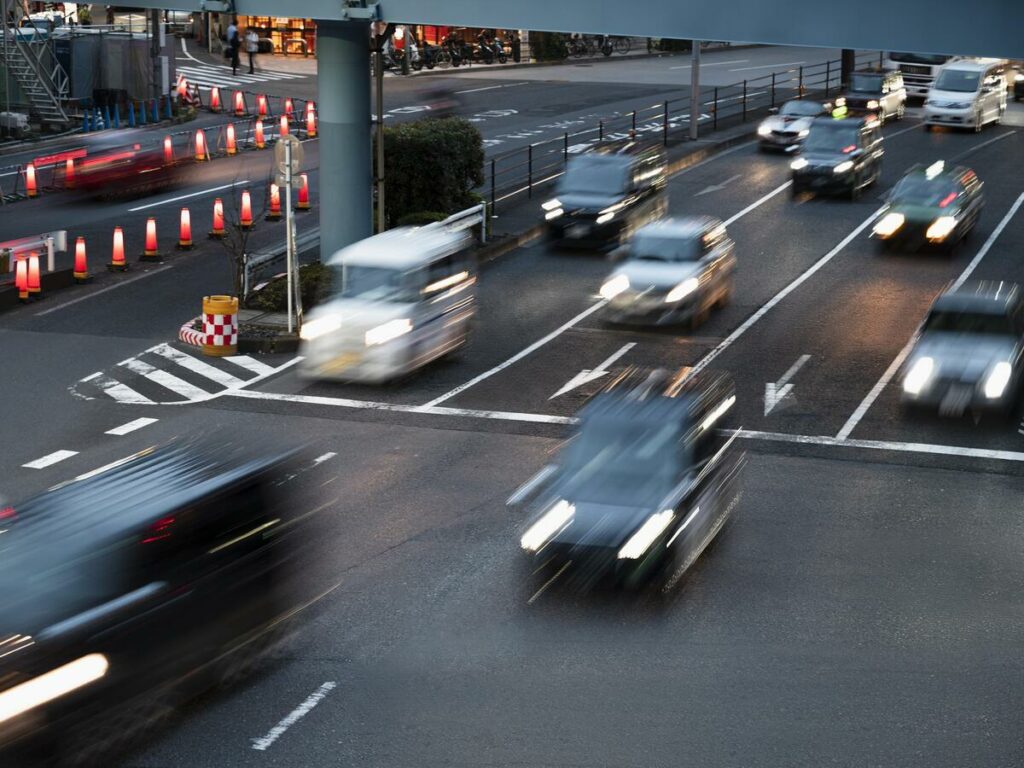
परिवहन में उभरती एआई तकनीकें
एआई हमारे हर दिन यात्रा करने के तरीके को बदल रहा है. स्मार्ट सिस्टम अब वास्तविक समय में ट्रैफ़िक पर नज़र रखते हैं और उसे नियंत्रित करते हैं. वे जाम कम करने और सड़कों को सुरक्षित बनाने के लिए सिग्नल का समय बदलते हैं. पूर्वानुमानित उपकरण ट्रैफ़िक पैटर्न का अनुमान लगाने के लिए पिछले डेटा का अध्ययन करते हैं. इससे ड्राइवरों को देरी से बचने और बेहतर मार्ग चुनने में मदद मिलती है. एआई सुरक्षा और यातायात प्रवाह को बेहतर बनाने के लिए संचार उपकरणों के साथ भी काम करता है. ये प्रणालियाँ नियम तोड़ने वालों को भी पकड़ लेती हैं, सभी के लिए सड़कें चिकनी और सुरक्षित बनाना.
जैसे -जैसे शहर बढ़ते हैं, traffic problems are getting worse. AI-powered tools study live traffic and adjust signals to keep cars moving. Companies like Iteris, Inc. and Arity are teaming up to improve traffic solutions. These new ideas show how AI is building smarter and safer roads for the future.
Innovations in Smart Traffic Cones
Smart cones are becoming key tools for managing traffic. They have sensors, GPS, and communication tech to adapt to changes. These cones can find dangers, send alerts, and even move themselves. यह उन्हें नियमित शंकुओं से कहीं बेहतर बनाता है.
One cool feature is the use of LED lights and reflective materials. These make cones easier to see in bad weather or at night, दुर्घटनाओं में कटौती. Smart cones also gather live data to help traffic teams respond faster to problems. By mixing AI with physical tools, these cones are making roads safer and more efficient.
बख्शीश: निर्माण क्षेत्रों के माध्यम से स्व-चालित कारों का मार्गदर्शन करने वाले स्मार्ट शंकु की कल्पना करें. इससे ड्राइविंग सुरक्षित और आसान हो सकती है.
एआई-संचालित यातायात प्रणालियों के लिए पूर्वानुमान
यातायात में एआई का भविष्य उज्ज्वल दिखता है. विशेषज्ञों का मानना है कि जैसे-जैसे शहरों का विस्तार होगा और सुरक्षा अधिक महत्वपूर्ण हो जाएगी, एआई-संचालित सिस्टम विकसित होंगे. मशीन लर्निंग और कंप्यूटर विज़न से यातायात का अध्ययन करने और मार्गों को बेहतर बनाने में मदद मिलेगी. शहर की व्यस्त सड़कों को संभालने के लिए स्व-चालित कारें इन प्रणालियों पर निर्भर होंगी.
बड़े बदलावों में लचीले यातायात क्षेत्र और बेहतर सड़क सेटअप शामिल हैं. एआई जाम को कम करने और प्रवाह में सुधार करने के लिए यातायात प्रणालियों को शीघ्रता से समायोजित करने में मदद करेगा. विश्व स्वास्थ्य संगठन का कहना है कि सड़क सुरक्षा एक बड़ा मुद्दा है, हर साल कई चोटें होती हैं. एआई उपकरण इन समस्याओं को हल करने में मदद करेंगे, यात्रा को सुरक्षित और अधिक कुशल बनाना.
यात्रा का भविष्य केवल चलती कारों तक ही सीमित नहीं है. यह स्मार्ट सिस्टम बनाने के बारे में है जो सुरक्षा पर ध्यान केंद्रित करता है, रफ़्तार, और स्थिरता.
एआई हमारे यातायात प्रबंधन के तरीके को बदल रहा है, सड़कों को सुरक्षित बनाना. इससे ट्रैफिक जाम कम करने में मदद मिलती है, दुर्घटनाओं को रोकना, और कार्यकुशलता में सुधार करें. लॉस एंजिल्स और कोपेनहेगन जैसे शहरों में पहले से ही कम यात्रा समय और स्वच्छ हवा जैसे लाभ दिखाई दे रहे हैं. स्मार्ट ट्रैफिक शंकु इस बदलाव में बड़ी भूमिका निभाएं. वे यातायात के अनुसार समायोजित हो जाते हैं, लाइव डेटा एकत्र करें, और देखना आसान है, जोखिम भरे स्थानों पर दुर्घटनाओं को कम करना.
उनका सर्वोत्तम उपयोग करना, व्यस्त क्षेत्रों में कोन रखें और ड्राइवरों को चेतावनी देने के लिए उनके अलर्ट का उपयोग करें. एआई सिस्टम में सुधार होता रहता है, समस्याओं का पूर्वानुमान लगाने और ट्रैफ़िक का तुरंत विश्लेषण करने के लिए उपकरण प्रदान करना. ये प्रगति भविष्य में सुरक्षित और सुगम परिवहन का वादा करती है.
| साक्ष्य विवरण | प्रभाव |
|---|---|
| एआई ट्रैफिक जाम को कम करता है 15% शहरों में. | बेहतर यातायात प्रवाह |
| स्व-चालित कारें सड़क यातायात को कम करती हैं 30%. | सड़कों पर कम गाड़ियाँ |
| एआई सिग्नल प्रवाह में सुधार करते हैं और प्रदूषण कम करते हैं. | स्वच्छ हवा और सुगम यातायात |
बख्शीश: डेटा एकत्र करने और सुरक्षा बढ़ाने के लिए निर्माण स्थलों और चौराहों पर स्मार्ट कोन का उपयोग करें.
अक्सर पूछे जाने वाले प्रश्न
स्मार्ट ट्रैफिक कोन क्या हैं?, और वे कैसे काम करते हैं?
स्मार्ट कोन में सेंसर होते हैं, GPS, और ट्रैफ़िक पर नज़र रखने के लिए उपकरण. वे लाइव डेटा इकट्ठा करते हैं, खतरों का पता लगाएं, और ड्राइवरों को तुरंत चेतावनी दें. चमकदार एलईडी लाइटें और परावर्तक सामग्री उन्हें देखना आसान बनाती हैं. यह सड़कों को सुरक्षित रखने में मदद करता है, रात में या खराब मौसम में भी.
एआई ट्रैफिक कोन प्लेसमेंट को कैसे सुधारता है??
सर्वोत्तम स्थान खोजने के लिए AI ट्रैफ़िक और क्रैश डेटा का अध्ययन करता है. सेंसर वाले स्मार्ट कोन खुद को बेहतर स्थानों पर ले जा सकते हैं. यह शंकुओं को वहां रखता है जहां उनकी सबसे अधिक आवश्यकता होती है, दुर्घटनाओं में कमी लाना और यातायात प्रवाह में सुधार करना.
क्या स्मार्ट ट्रैफिक कोन आपात स्थिति के दौरान मदद कर सकते हैं??
हाँ, स्मार्ट कोन लाइव रोड अपडेट साझा करके आपातकालीन टीमों की मदद करते हैं. वे अवरुद्ध सड़कों या घुमावदार रास्तों पर कारों का मार्गदर्शन करते हैं. उनके त्वरित समायोजन से कठिन परिस्थितियों से निपटना आसान हो जाता है.
क्या स्मार्ट ट्रैफिक कोन पर्यावरण के अनुकूल हैं??
स्मार्ट कोन यातायात को सुचारू बनाकर और देरी को कम करके ईंधन बचाते हैं. इससे कार प्रदूषण कम होता है. उनकी एलईडी लाइटें कम ऊर्जा का उपयोग करती हैं, हरित परिवहन प्रणाली बनाने में मदद करना.
क्या स्मार्ट ट्रैफिक कोन पारंपरिक कोन को पूरी तरह से बदल देगा??
स्मार्ट कोन नियमित कोन की जगह नहीं लेते बल्कि उन्हें बेहतर बनाते हैं. वे खतरे की चेतावनी और लाइव अपडेट जैसी सुविधाएं जोड़ते हैं. एक साथ, वे सुरक्षित और अधिक कुशल यातायात प्रणालियाँ बनाते हैं.

